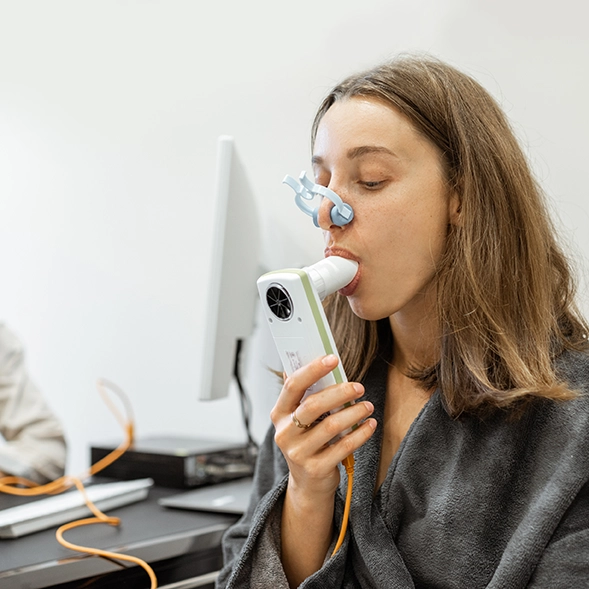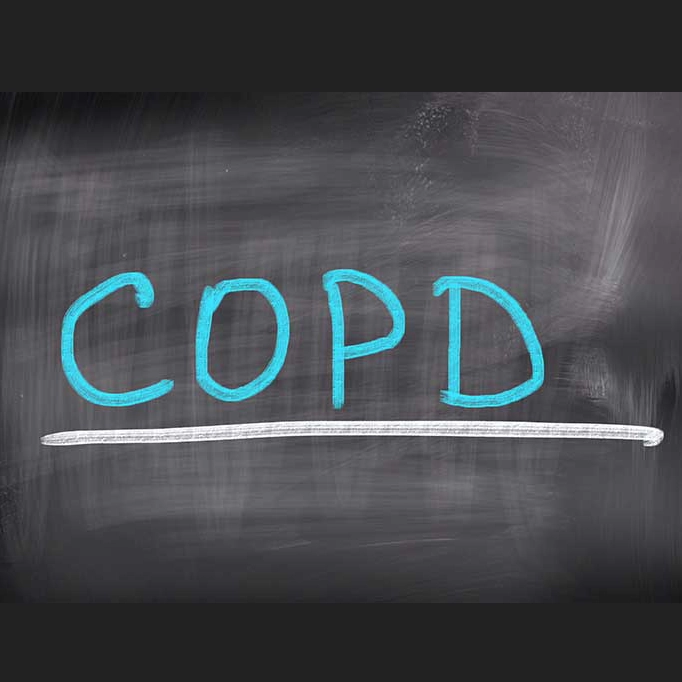ATS 2025: Cardiopulmonary Risk Benefits of Budesonide/Glycopyrrolate/Formoterol Fumarate Triple Therapy: A Number Needed to Treat Post Hoc Analysis of the ETHOS Trial
Introduction:
The concept of Number Needed to Treat (NNT) provides a measure of the absolute benefit of an intervention and supports clinical decision-making. Budesonide/glycopyrrolate/formoterol fumarate (BGF), a triple inhaled therapy combining ICS, LAMA, and LABA, has demonstrated advantages over dual bronchodilation (glycopyrrolate/formoterol fumarate, GFF) across several cardiopulmonary outcomes.
Objective:
This post hoc analysis from the ETHOS trial assessed the NNT for triple therapy budesonide/glycopyrrolate/formoterol (BGF) vs. dual therapy glycopyrrolate/formoterol (GFF) across key cardiopulmonary endpoints
Methods:
- Design: Post hoc exploratory analysis from the ETHOS Randomized Controlled Trial (RCT)
- Population: >8,500 patients with moderate-to-very severe COPD and prior exacerbations
- Duration: 52 weeks
- Patients randomized in 1:1:1:1 ratio to one of the following treatment arms in the ETHOS trial:
- Triple Therapy (LAMA+ LABA + Higher-dose ICS)
- Glycopyrrolate 18 μg + Formoterol 9.6 μg + Budesonide 320 μg
- Administered twice daily via a metered-dose inhaler (MDI)
- Triple Therapy (LAMA + LABA + Lower-dose ICS)
- Glycopyrrolate 18 μg + Formoterol 9.6 μg + Budesonide 160 μg
- Administered twice daily via a metered-dose inhaler (MDI)
- Dual Therapy (LAMA + LABA)
- Glycopyrrolate 18 μg + Formoterol 9.6 μg
- Administered twice daily via a metered-dose inhaler (MDI)
- Dual Therapy (LABA + ICS)
- Formoterol 9.6 μg + Budesonide 320 μg
- Administered twice daily via a metered-dose inhaler (MDI) or Dry powder inhaler
- Triple Therapy (LAMA+ LABA + Higher-dose ICS)
- Endpoints: annualized Number Needed to Treat (NNT) with BGF (triple therapy) compared to GFF (dual LAMA/LABA therapy):
- Time to first Cardiac adverse event (AE)
- Time to Major adverse cardiac event (MACE)
- Time to a Composite severe cardiopulmonary event: MACE, COPD hospitalization, or respiratory death
Results:
|
Endpoint |
Annualized NNT (BGF vs GFF) |
95% Confidence Interval |
|
Cardiac AE |
27 |
21–45 |
|
Major adverse cardiac event (MACE) |
118 |
70–NC |
|
Severe cardiopulmonary event |
37 |
22–148 |
- ~70% of participants had ≥1 cardiovascular risk factor at baseline
- BGF showed consistent benefits across all endpoints
Conclusion:
In patients with moderate-to-very-severe COPD, triple therapy with BGF was associated with meaningful reductions in cardiopulmonary risk, as reflected by favourable NNTs. These findings suggest that BGF may offer systemic benefits that extend beyond symptom control and lung function improvement.
Am J Respir Crit Care Med 2025; 211: A1016
American Thoracic Society 2025 International Conference, May 18-21, San Francisco



